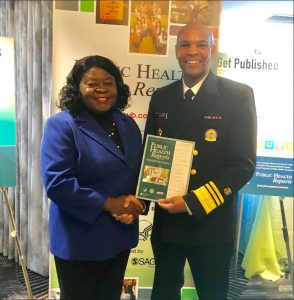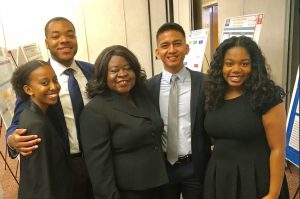Mission Possible: Science to Action – Reducing Health Disparities
Posted on by Nestor, a young man from El Salvador, was born with HIV but did not learn about his infection until he was a preteen. Arianna is a transgender woman living in the southern United States; she has been living with HIV since 2006. Anthony, who lives in New York, has been living with HIV for 23 years. Brenda is the only member of her family who is living with HIV. After hearing their diagnosis, all of them faced fear and stigma. As Arianna says in the mini-documentary, Let’s Stop HIV Together: A Short Film, “Stigma is like air. You don’t see it, but you feel it.”
Nestor, a young man from El Salvador, was born with HIV but did not learn about his infection until he was a preteen. Arianna is a transgender woman living in the southern United States; she has been living with HIV since 2006. Anthony, who lives in New York, has been living with HIV for 23 years. Brenda is the only member of her family who is living with HIV. After hearing their diagnosis, all of them faced fear and stigma. As Arianna says in the mini-documentary, Let’s Stop HIV Together: A Short Film, “Stigma is like air. You don’t see it, but you feel it.”

On June 5, 1981, the Morbidity and Mortality Weekly Report published the first report of what later became known as the HIV/AIDS epidemic. Beginning with that first report, fear and stigma have surrounded this disease. Two years into the epidemic, CDC identified all the major routes of HIV transmission and ruled out transmission by casual contact, food, water, air, or environmental surfaces. Although we know how HIV is spread and how it is not spread, people living with HIV still face the challenge of stigma every day.
In CDC’s National Center for HIV/AIDS, Viral Hepatitis, STDs, and TB Prevention (NCHHSTP), and elsewhere across the agency, we understand the ways in which some people are much more affected than others by disease and injury. The difference in rates of infections among different populations is often referred to as health disparity. Disparities can occur by sex, gender identity, age, race or ethnicity, education, income, disability, geographic location, or sexual orientation. Poverty, unequal access to health care, limited education, stigma, and discrimination are all linked to health disparities. When we work to reduce these preventable disparities, we are working toward achieving health equity for all persons.
One of the ways in which I have worked to eliminate health disparities during my many years at CDC is by improving our knowledge base. To improve the surveillance data we use for guiding our prevention programs, I led the expansion of CDC’s annual HIV Surveillance Reports so that they now include more detailed population-specific data. These data are used by CDC and its public health partners to address health disparities and focus limited resources to achieve greater success. This approach is called high-impact prevention.

I also successfully led a collaboration between CDC and the Health Resources and Services Administration in crafting the first edition of the Integrated Guidelines for Developing Epidemiologic Profiles for HIV Prevention and Ryan White Care Act Planning. State and local governments still use these guidelines to
- describe the burden of disease in geographic areas,
- make recommendations for allocating HIV prevention and care resources,
- plan prevention programs with public health partners, and
- help jurisdictions evaluate the success of their work.
I have also been able to leverage my knowledge and experience working in HIV/AIDS by developing and implementing new strategic approaches in promoting health equity and reaching vulnerable populations. This work has led to establishment of the first Office of Health Equity within NCHHSTP. In my role as the center’s Deputy Director, I continue this work daily.
Progress toward prevention of our diseases of focus has been uneven among populations, and we must do more. By mentoring new generations of public health professionals and supporting high-quality scientific research in health equity and social determinants of health, I continue to promote our mission of saving lives, protecting people, and reducing health disparities among youth and all persons affected  by HIV/AIDS, viral hepatitis, sexually transmitted diseases, and tuberculosis.
by HIV/AIDS, viral hepatitis, sexually transmitted diseases, and tuberculosis.
Special thanks to Dr. Dean for contributing this blog in recognition of the 30th anniversary commemoration of CDC’s Office of Minority Health and Health Equity. Our theme for the 30th anniversary commemoration is Mission: Possible. We believe “healthy lives for everyone” is possible and a goal that resonates in public health.
2 comments on “Mission Possible: Science to Action – Reducing Health Disparities”
Comments listed below are posted by individuals not associated with CDC, unless otherwise stated. These comments do not represent the official views of CDC, and CDC does not guarantee that any information posted by individuals on this site is correct, and disclaims any liability for any loss or damage resulting from reliance on any such information. Read more about our comment policy ».



Thanks for sharing a nice information and I like to read your blog. I have read your blog and i got a lot of information about HIV and AIDS.
Thanks for Sharing
Thanks and Regards
I consider myself fortunate enough that I visited your blog after browsing through so many blogs.It was really informative.Thanks for sharing.